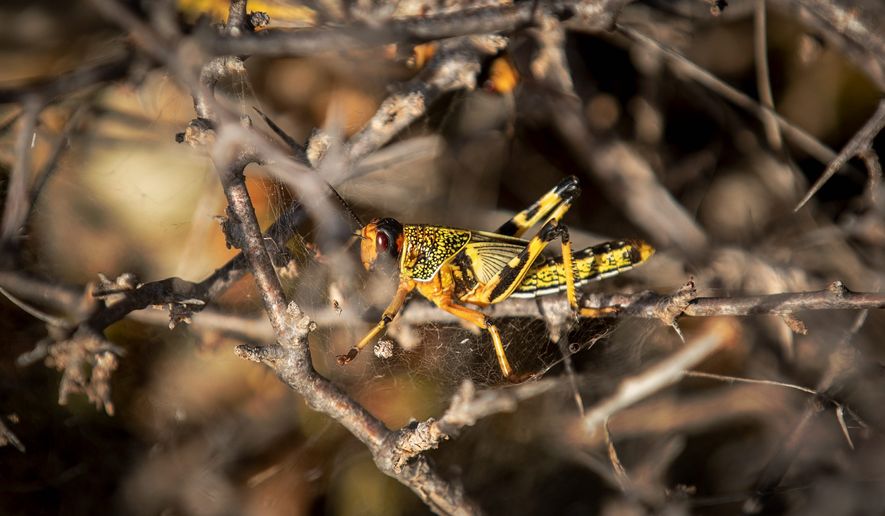An ancient plague is posing a very modern threat across wide swaths of Africa and South Asia.
Desert locust swarms of biblical proportions are decimating farmers’ crops in mere days and threatening the livelihoods and food security of millions in countries from India eastward to Kenya and Ethiopia.
United Nations food experts say the locust epidemic is the worst outbreak Kenya has seen in 70 years, and the worst infiltration Ethiopia and Somalia have experienced in a quarter-century.
With a hungry 150 million-strong swarm able to travel 80 miles in a single day, Somalia last week became the latest country to declare a national emergency in response to the locust threat.
“Given the severity of this desert locust outbreak, we must commit our best to protect the food security and livelihoods of Somali people,” Minister of Agriculture and Irrigation Said Hussein Iid said. “If we don’t act now, we risk a severe food crisis that we cannot afford by any means.”
International experts, the Africa Union Commission and eight African governments gathered again on Friday in Ethiopia to discuss ways to control the crisis, and prevent the locust hordes from spilling over into even more countries.
“Locusts do not wait, they will go wherever they want, and they will destroy anything they want,” U.N. Food and Agriculture Organization (FAO) Deputy Director-General Maria Helena Semedo told the Addis Ababa gathering. “Please do not wait to act.”
Experts say the intense upsurge in the locust population is due to rainfall patterns caused by a spike in cyclone frequency in 2019. Eight cyclones made landfall in Somalia in 2019, the highest number Eastern Africa has faced since 1976. The wet conditions created the perfect breeding conditions for the locust, a migratory grasshopper that usually lives alone but can combine into massive destructive swarms under the right conditions.
“Sometimes a combination of rainfall patterns and vegetation will cause the population to explode,” Lynn Kimsey, entomology professor at the University of California-Davis, said, adding, “You’re talking about billions [of locusts], almost to the point you can’t breathe.”
Kenyan President Uhura Kenyatta on a visit to Washington last week attributed the soaring locust population to changing climate patterns, noting that January is usually the driest month in his country.
“Climate change is real,” Mr. Kenyatta told the Atlantic Council last week. “We believe it, and we are actually living it.”
For those living in the Horn of Africa, the outbreak is unlike anything seen for generations.
Desert locust researcher Keith Cressman said many of the farmers in East Africa have only heard stories from their grandparents about apocalyptic locust swarms before this year’s infestation began.
The UN’s FAO has deployed field officers to assist in the fight to contain the spread of the locusts, whose population is numbering in the billions.
The desert locust is the “most destructive migratory pest in the world,” according to FAO, and in just six months, experts are predicting the population could swell 400-fold.
The greatest threat to Kenya, Ethiopia and Somalia right now is not the presence of the locusts themselves, Mr. Cressman said, but rather the long-term damage they wreak on crops and local farming economies.
On a recent visit to Somalia, Mr. Cressman said the immature locusts have not yet sprouted wings, but instead “march across the plains like a moving carpet.”




Please read our comment policy before commenting.